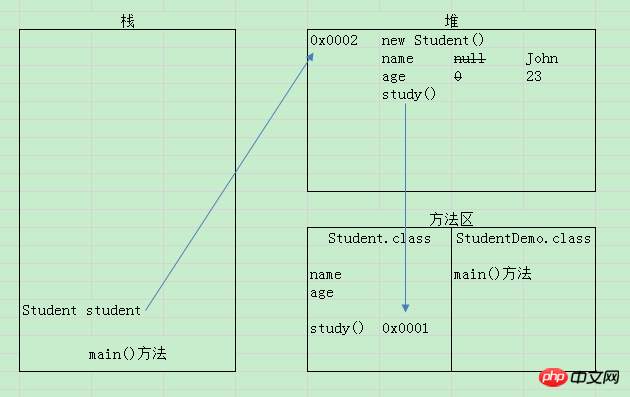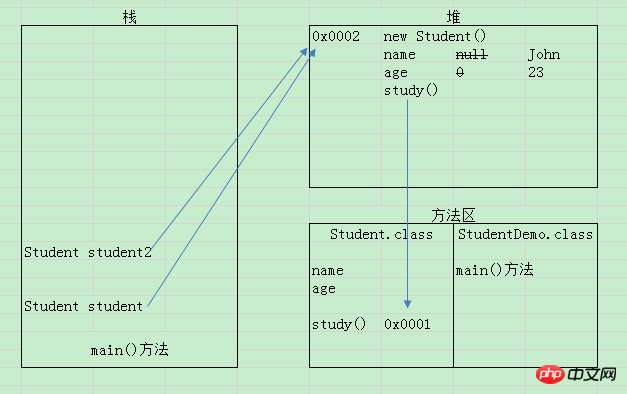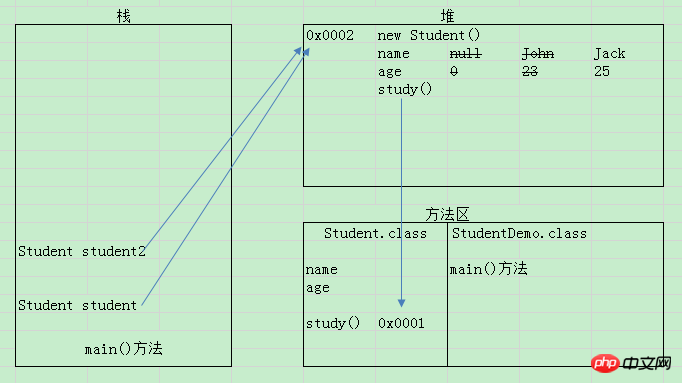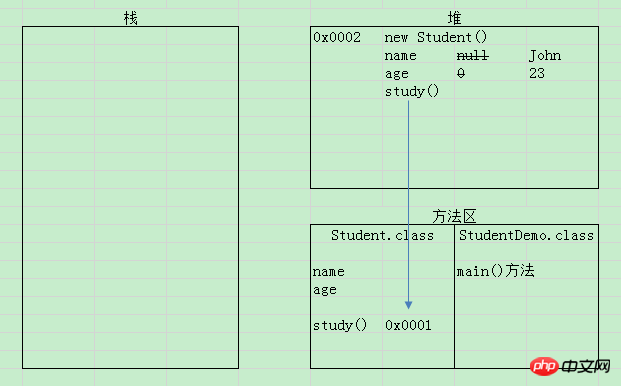
This article mainly introduces relevant information on the analysis of program memory in Java. Friends who need it can refer to it.
This article will briefly explain the JVM (Java Virtual Machine) when we run a Java program. machine) memory allocation.
First of all, let’s get to know a few nouns perceptually:
1. Stack. Generally speaking, basic data types are directly in Space is allocated on the stack, and local variables (variables defined in the method code segment) are also directly allocated on the stack. When the method where the local variable is located is executed, the space is immediately reclaimed by the JVM. There is also a reference data type, namely What we usually call the reference corresponding to the object that needs to be created using the keyword new is also in the stack space. At this time, the JVM allocates an address space to the object reference in the stack space (equivalent to a house number, through this house number You can find your home by number), allocate a space in the heap space for the referenced object, and the address reference in the stack space points to the object area in the heap space (find the address through the house number);
2. Heap is generally used to store data generated using the new keyword.
Next, we will use a program to intuitively feel the memory situation of the JVM when the program is running.
package demo;
public class Student {
private String name;
private int age;
public void study() {
System.out.println("I love study!");
}
public String getName() {
return name;
}
public void setName(String name) {
this.name = name;
}
public int getAge() {
return age;
}
public void setAge(int age) {
this.age = age;
}
}package demo;
public class StudentDemo {
public static void main(String[] args) {
Student student = new Student();
System.out.println(student.getName() + ":" + student.getAge());
student.setName("John");
student.setAge(23);
System.out.println(student.getName() + ":" + student.getAge());
student.study();
Student student2 = student;
student2.setName("Jack");
student2.setAge(25);
System.out.println(student2.getName() + ":" + student2.getAge());
System.out.println(student.getName() + ":" + student.getAge());
}
}When we run the program, the JVM will compile the Student class and StudentDemo class and then load them Go to a place called the method area in the JVM. The member variables and member methods of the class are also loaded into the method area. At this time, the memory model is as follows

You can see the study method There is a hexadecimal mark on the right side, but the name and age variables do not. This is because each object has its own member variables, but the member methods in the class can be shared by each object. In order to save memory space, The JVM allocates this mark (also called a memory address) to the method so that each new object can be found and called. Then the JVM will automatically find the main method and apply for a space in the stack for the main method. This process is also called pushing onto the stack and then executing In the 5th line of code in our Student class, at this time, the JVM allocates a piece of memory to the Student object in the heap space and assigns it a memory address (if the object's member variables are not assigned a value, the JVM will assign an initial value to the variable). Allocate a memory space in the stack to point to the memory address of the Student object area in the heap space. At this time, the memory model is as follows

Then look at lines 8 and 9 of the code OK, the program assigns values to the member variables of the student object. The JVM will search for the variables of the Student class in the heap memory based on the address pointed by the student, and assign new values to the variables

Line 12, at this time the student object calls the study method, and the JVM applies for a memory space in the stack space for the study method

After the study method is executed, the stack is released immediately Space, code line 14, the reference of the student2 object points to the address pointed by student

Code lines 15 and 16 assign values to the variables of student2, because student2 and student point to to the same place, so the value of the variable in the student object is also changed at this time

#At this point, all the code in the main method has been executed, and the stack space occupied by the main method Also recycled, while the heap space is waiting for GC recycling

The code execution results are as follows:
null:0 John:23 I love study! Jack:25 Jack:25
The above is the detailed content of Java code analysis about program memory. For more information, please follow other related articles on the PHP Chinese website!




